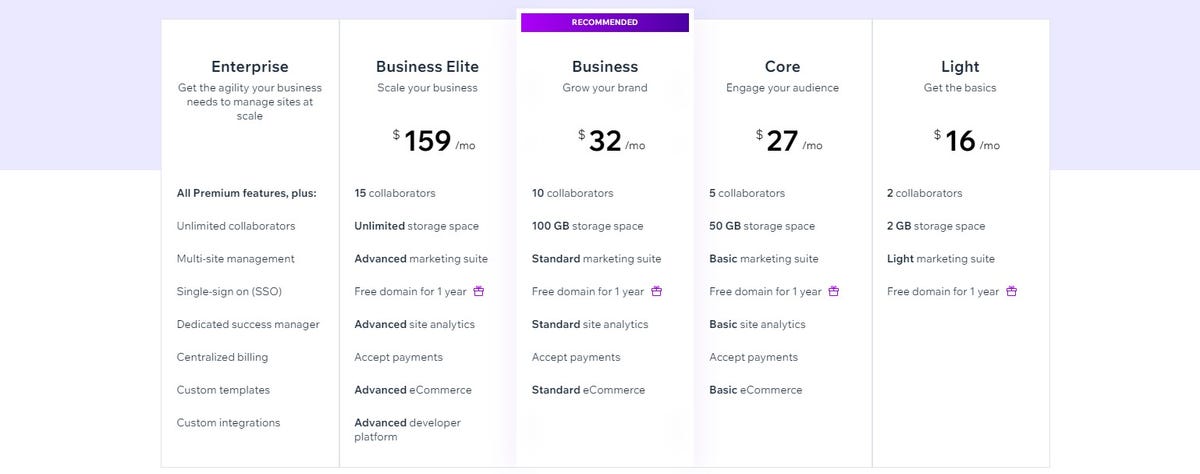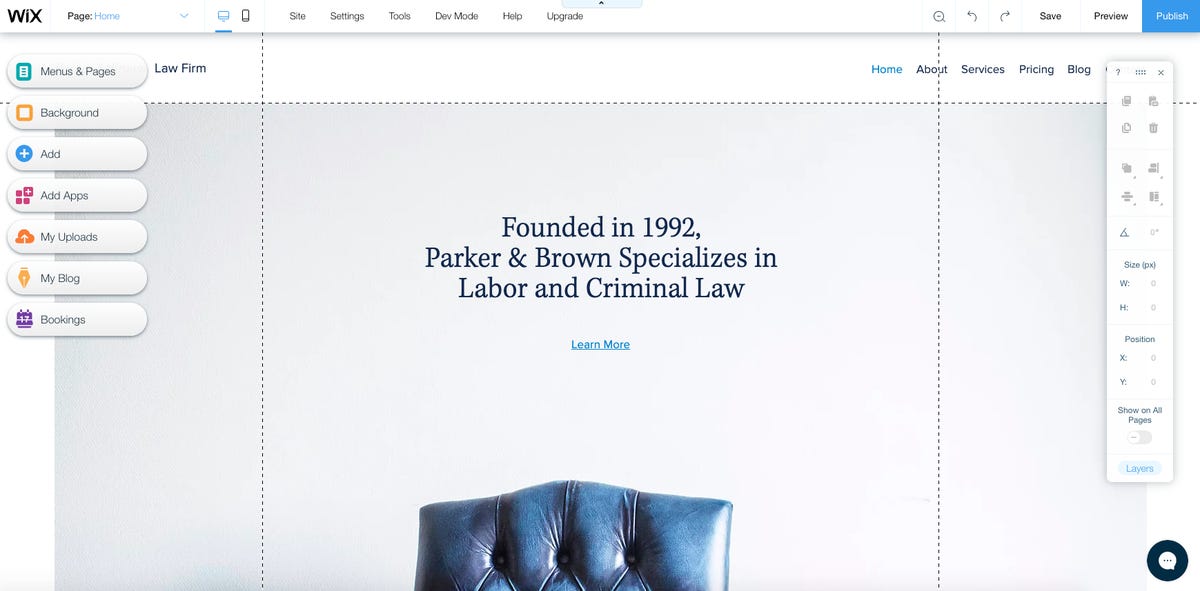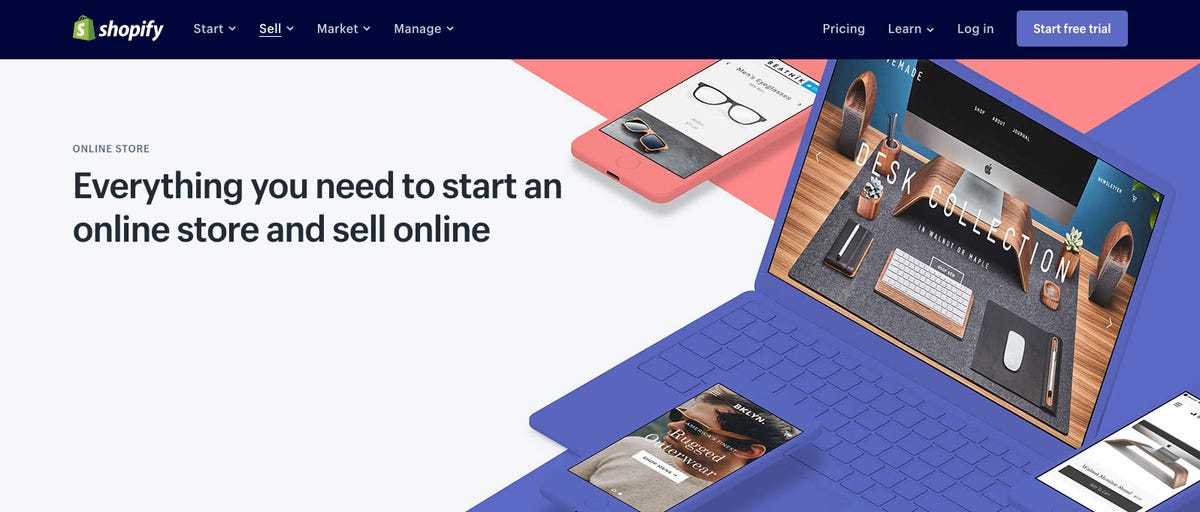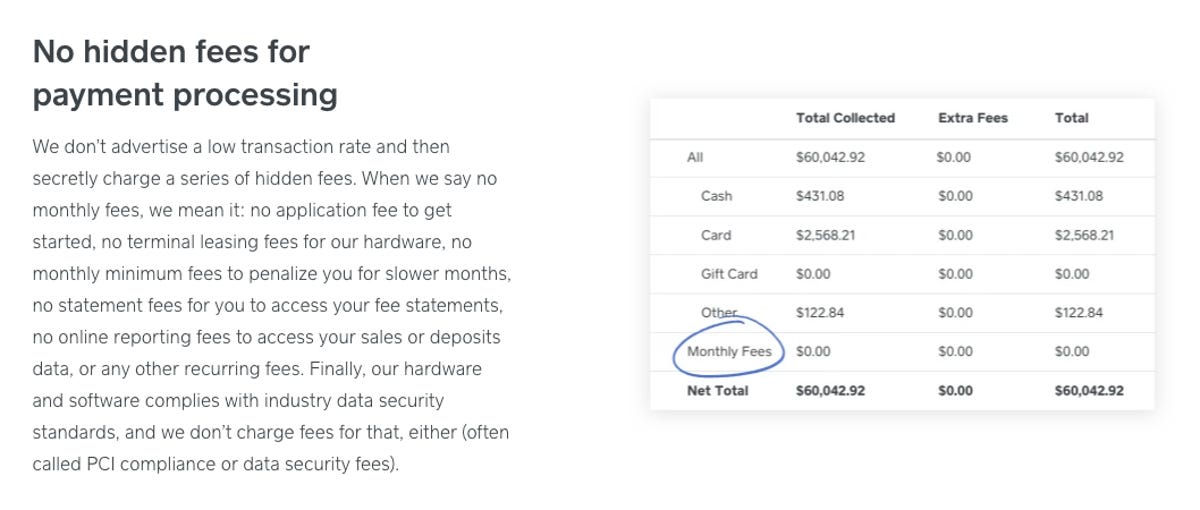Best Website Builder for 2024: Reviewed by Our Experts

Back in the day, you would’ve had to hire a professional coder to build a site, but not anymore. With website builders, you can make your own site without any coding knowledge.
There are free builders for simple sites and premium offerings for the more-complicated varieties. Services like Squarespace, Wix, and Weebly let you put together anything from a basic landing page to a feature-loaded business website with email marketing and e-commerce. That’s awesome, but the abundance of site builders means it can be a bit much to comb through them all and pick the best one for your particular needs.
To help make it easier for you to decide, we’ve compiled a list with all the information you’ll need to know about these website builders, so you can focus on the building instead of the different features, the marketing and the pricing. We have a few popular picks on our list, but name-brand builders aren’t ideally suited for every scenario. For this list, we’ve considered customization options; marketing and SEO tools; customer support quality; and e-commerce features.
Best website builders compared
*The starting price doesn’t include cheaper plans if they are ad-supported. Some vendors offer free domain hosting for the first year on some plans as well.
To compile this list, we researched the plans, prices and features of over 12 different website builders and scoured reviews from several sites (including PCMag, Wirecutter, SiteBuilderReport, WebsiteToolTester, WPBeginner and more) to see where there might be any consensus. We also surveyed the CNET staff and ultimately spent time building some test sites using the tools below (if we weren’t already members). We paid particular attention to the categories that not only differentiate one site from another, but that actually matter to business owners, artists and creators such as SEO features, creative cloud, mobile-friendly website builders, available plugins, live chat options, e-commerce features, pricing plan and customer support.
If you’re still not sure which direction to go with your web builder by the end of this list, we’ve included a guide at the bottom, including key questions you should be asking yourself as you start your online venture. Finally, if you already have a basic website and just need a host or you’re interested in building a self-hosted WordPress site, check out our list of best web hosting services and our list of the best WordPress hosting services.
Jump to: How to choose the best website builder
Best website builders of 2024
Wix is the clear front-runner in the race for website builder dominance. It’s the biggest player with over 8 million live websites according to Built With. This popular website builder also boasts the greatest quantity of tools, capabilities, and freedom.
Wix covers the full ease-of-use spectrum by offering an AI-fueled automatic website creator on one end (“Wix ADI”) that requires minimal effort from the user, all the way to Velo by Wix, an open development platform for advanced applications like Javascript, databases and data-driven dynamic pages. To maximize the experience, we do recommend choosing one lane (e.g., Wix ADI, specific templates or design-from-scratch), since it can be difficult to maintain consistency across your landing page & website design if, for example, you start with a template but then decide you want to totally customize it.
Like many competitors in this space, Wix offers a basic free website builder plan that lets website owners create a free website starter site with ads. If you like what you see with the free website builder, you can spend up for a premium, ad-free site. Pricing falls within industry standards with a $17 per month “Light” plan that covers most needs for a personal website. If you need an e-commerce website builder for your store, Wix offers a $36 per month “Business” e-commerce website plan for your online store. Those prices only include a free domain for one year, so you’ll need to account for that separately beyond the first year. If you’re interested in stats and analytics, Wix has limited analytics tools available for all plans above the light plan. If you only need the basic plan, you can always get a Google Analytics paid plan in addition to your Wix site.
Despite being the clear favorite among most reviewers, Wix does have a few drawbacks. Wix was one of the few builders that has data limitations for each of its plan tiers, so if you want to upload endless photos and videos, or expect a large amount of monthly visitors to your site, make sure you do the math before choosing a plan. It’s also worth noting that if you choose to use Wix for free there will be a banner at the top of your site promoting Wix.
Also, the editor’s freedom and range of options can be overwhelming for folks who don’t have the time or inclination to make lots of little decisions and the web design flexibility means you’ll need to be more hands-on with the format and layout, as opposed to more structured or limited editors where you can’t draw too far outside the lines.
Squarespace strikes us as being the cool kid in high school: flashy and hip on the surface but lacking substance underneath. We found it to be in between Wix and Weebly in terms of ease of use, although it did get consistently positive marks from reviewers for the quality of the design options. Where we think it really might shine is for small- to medium-sized businesses who want a nicely designed page and room for e-commerce growth with lower transaction fees.
The Squarespace editor isn’t as intuitive as Wix and Weebly, requiring a little bit of work until you get the hang of it. It has a fair amount of add-ons, website templates and tools, and the universal style editor and strong photo editing are helpful. The responsive website editor means that your site will always look good on a mobile device, but you can only make mobile-specific edits on areas of your page that use their Fluid Engine feature. We also found consistently high marks for helpful and responsive customer support, which should put business owners’ minds at ease.
Squarespace starts off with a $16-a-month Personal plan, which includes unlimited storage, bandwidth and one year of a free domain if you pay annually ($16/month), and offers a $36 Business website plan that includes unlimited contributors, one year of a free Google Workspace account, and e-commerce store builder capabilities. If you go for a “Commerce” plan, you can choose between a $36-a-month basic or $72-a-month advanced plan ($28 or $52/month with annual pay). The advanced plan includes a few final touches like abandoned shopping cart recovery and subscription products. It’s important to note that the basic commerce plan, while maybe slightly above the market rate for an e-commerce site, comes with no transaction fees. Depending on your sales volume on a given month, those savings for our online store could really add up.
Overall, Squarespace’s website is a good analog for what you get with its products: clean, professional and inviting design, but without the layers of design power or freedom you get from other builders.
Weebly flies under the radar relative to Wix with over 800,000 live websites, but offers some excellent options depending on your needs. If you want a simple and easy-to-use do-it-yourself website editor, plus a large site (more than 25 to 30 pages), unlimited storage, site portability feature and affordable (yet powerful) online store capabilities, Weebly may be a good fit.
The editor is one of the easiest website builder options to use and the low learning curve still nets great-looking sites. That ease of use means the editor is more limited in terms of add-ons and design flexibility and it doesn’t have the range of options or mobile customization that a builder like Wix has. Still, in our testing, we never came to a point where we found those constraints to be limiting. For a high-octane web designer, it could come up.
Weebly’s prices are similar to competitors like Wix or Squarespace, but its free plan option is one of the most generous among free website builders and for just $13 a month ($10 a month when purchased annually) you can get up and running with your own domain name (albeit with Weebly ads). Its $16 a month plan ($12 a month when purchased annually) will give you an ad-free site with analytics and commerce capabilities, while the $29 a month plan ($26 a month when purchased annually) gets you more store tools, like PayPal payment, item reviews, and abandoned cart emails.
Weebly is a good option for those who may be more limited in terms of their time investment and its commerce options outshine competitors like Wix and Squarespace. For those who are wary of committing to a website builder knowing that you won’t be able to pick up and leave later on, Weebly also offers the ability to download site files so you can move to another host, a rarity in the site builder landscape.
Duda is a smaller player compared to the other builders above with around 900,000 live websites and it focuses on a specific market segment: designers and design agencies. It caters to individuals and groups that make up a lot of sites, but with a powerful and easy-to-use builder and many differentiated offerings, it’s emerged as a good option for anyone looking to develop an online presence.
Duda’s builder boasts several features that set it apart, including detailed data analytics (e.g. advanced metrics like form submissions, time on page and bounce rate) and user personalization so you can easily display specific messages or offers to users based on the time of day, their location or their browsing history. It’s also known for its multilanguage support and a free e-commerce add-on that allows you to sell up to 10 products.
Duda’s pricing is fairly close to its main competitors, Wix and Weebly, starting at $19 per month for the Basic plan. At $29, you can add up to three additional team members to your site (instead of only one with Basic), add dynamic pages, access client management tools, plus get AI assistance for content and SEO. Its “Agency” plan at $52 per month is geared toward web designers who are building pages for multiple clients and includes four websites and the ability to download site files for portability. With “White Label” at $149 per month you can make your sites completely using their White Label website builder. This comes with a custom domain, branding options and access to the white-labeled support portal. If none of these fit what you’re looking for, there’s also the option to contact them for a custom plan.
Duda is a little expensive, but it fills some of the voids that the main players have like analytics, multilingual capabilities, and better personalization.
GoDaddy is best known for its custom domain names and web hosting services, so it makes sense that it also offers website builder software. The name is a mouthful — “Websites + Marketing” — but it’s a similar templatized experience like the other options on this list, designed to get a basic site up and running in under an hour.
The free tier includes such niceties as email and social media marketing, PayPal, Apple Pay, Google Pay, Square and Stripe payments and an SSL certificate. The $11 monthly plan is straight-up basic; the $15 premium plan tacks on extended support for appointments and social ad support and its $21 per month commerce plan is for online store capabilities, including some impressive product listing and shipping options for your store. These prices reflect the standard monthly costs, but new users can save a bit each month by opting for an annual term.
Even though GoDaddy is better known as a domain seller, a domain isn’t included in those prices — you’ll need to add that separately. All in all, GoDaddy’s current website creator is a nice start. If you choose to start with the free tier, there’s no timer on your experience, so you can take your time kicking the tires to see if GoDaddy is right for you.
When most people talk about WordPress, they’re usually referring to the free open-source software available through WordPress.org. That’s very powerful, but it takes some time to learn and still requires that you find a website host and domain name. If you’re interested in going the advanced route of WordPress.org, we recommend you check out a tutorial or guide such as those you can find on WPBeginner or ToolTester to learn how it works.
The WordPress.com website builder is something else. It’s similar to the other builders listed above and is primarily geared toward bloggers and writers. The WordPress website editor is fairly limited compared to other services but is easy to set up and has everything you need for blogging. We should also note that it’s not an intuitive drag-and-drop website builder like Wix or Weebly and to use drag-and-drop you will need to get a plugin that adds it.
While there is a free option, it’s a pretty bare-bones package offering only 1GB of storage. For $25 or $45 per month, the “Creator” and “Entrepreneur” plans respectively bump storage up to 50GB of storage. They also give you access to a slew of helpful features including over 50,000 plug-ins like forms and calendars, safety features like one-click restores and real-time backup, expert support and the ability to sell products with WooCommerce.
Between these levels are the “Starter” and “Explorer” plans. The $4 a month “Starter” plan removes ads and adds SSL. You also get email support for your site. With “Explorer” you pay $8 per month and it adds 4K videos and automatic social media shares, and you can see your data with advanced stats and the activity log for your page. Your support options are also improved with live chat availability. Personalization comes into play at this level to with unlimited premium themes and style customization.
Overall, WordPress caters to bloggers who don’t want or need to spend a lot of time on website design, but it feels very limited for most other use cases. That said, anyone who’s looking for more robust off-the-shelf CMS (content management systems) options should consider Joomla and Drupal. Both are arguably less user-friendly than WordPress but offer more customization options. At least one CNET editor also felt that Drupal and Joomla also offered faster page loading speeds.
If Wix is the clear favorite for most website-building needs, Shopify fills that role for an e-commerce store. The platform offers an easy and user-friendly way to get an e-commerce website store up and running online, and it supports business owners throughout the process with their e-commerce tools. Shopify is a safe place to start for most “e-tailers,” although similar to Wix, that doesn’t mean it’s perfect for every scenario.
Like most other commerce-focused builders, Shopify’s platform is geared toward your product and sales details. For those without a ton of experience setting up a retail operation, Shopify’s process ensures you won’t miss an important step as it guides you through inventory, customer information and tax and shipping rates. If you still have a question, Shopify offers 24-7 phone and chat support and an active online community forum. There is an AI bot to help track down the appropriate resources for your problem, and if they aren’t the right match, then it will provide support options.
Given that its user base is fairly defined, Shopify doesn’t offer a plethora of plan options, and its prices come in above the market average. The “Basic” plan is $29 a month and covers most of the basic needs for an online store, while the $79 a month “Shopify” plan offers more staff accounts as well as shipping discounts and insurance. From our perspective, it was hard to rationalize the $66 jump from basic to Shopify, but if you factor in the reduced transaction fees and shipping discounts, it might make sense. If you’re running a bigger operation, they also offer a $299-a-month plan.
The main drawback of Shopify is probably its pricing model. If you want the support, guidance and a builder that will take care of most of the technical details, the extra costs are worth it. The many apps available are enticing, but can also add up if you’re using those custom apps that cost extra. If after considering the different e-commerce features you’re still on the fence, we recommend you calculate the total cost of additional add-ons and transaction fees based on your sales, and then compare with competitors like BigCommerce, which offers more product variants and combinations and lower fees.
BigCommerce lives up to its name — it’s best for medium- to large-scale online stores that can cash in on the lack of added transaction fees and unlimited product variants. The store site builder might not be quite as easy to use as Shopify’s, but the amount of time you spend getting used to it could save you a lot of money down the road.
The editor has a lot of features and flexibility when you’re getting set up, but similar to Wix, that can be too much for newcomers. If you have a little experience, those features and tools — like product variants and tax rates — will probably come in handy as you grow or if you’re already at scale.
BigCommerce’s price tiers are identical to Shopify’s at $39 (Standard), $79 (Plus) and $299 (Pro), but what you get at each level differs. Even the lowest BigCommerce plan gives its clients unlimited users, unlimited bandwidth and storage, unlimited products and no added transaction fees. You can even link your e-commerce site to eBay, Amazon, and Walmart. Where the pricing gets a little tricky is with the sales thresholds: The Standard plan only supports annual sales of less than $50,000, while Plus supports up to $180,000 and Pro up to $400,000. Basically, you save a lot of money on transaction fees the more sales you rack up, but if you have enough sales, you have to upgrade to the next plan tier.
As with all the online store builders, it’ll be worth it to do a little math based on your product inventory and expected sales. No transaction fees strike us as a major deal-maker depending on your size, so if you’re a bigger operation, take advantage of the 15-day trial and give BigCommerce a shot.
How to choose the best website builder

Given the wealth of options and the fact that many website builders don’t allow you to pick up and move later on, it’s important to enter the fray with a clear idea of what you need. By first establishing your priorities and direction, it will be easier to find a match for the best website builder and avoid buyer’s remorse down the road.
In terms of pricing, most builders offer two to four different price tiers, each with a different set of features. This can make comparing services difficult since they don’t make it easy to evaluate side-by-side, but that’s a big reason why we’ve created this handy guide.
Generally speaking, you can get a good individual website built for around $10 to $20 a month with an annual subscription. Most e-commerce plans range between $25 to $35 per month and if you need an enterprise-style plan with multiple editors and VIP-level support, prices can go up to $400 per month for a premium plan.
Storage and bandwidth are usually unlimited, but there are exceptions like Wix, which scales its storage capacity according to the plan tier. Even its lowest tier plan has a decent amount (2GB of storage and unlimited bandwidth).
After the big questions like price and storage, finding the best website builder all comes down to what you’re looking for. Below are some guiding questions to help ensure you’re ready to shop like an expert and find the best website builder for your needs.
What is the purpose of your site?

Your first step should be to determine the primary goal of your web presence. Do you want to sell a product? Attract potential customers for your services? Build a portfolio page?
By first establishing your raison d’etre, you’ll be able to prioritize the tools, plugins and capabilities you want in your builder and not get pulled off track by a fancy add-on that isn’t actually helping you achieve your goal. If you’re primarily interested in racking up sales, start by looking at e-commerce specialists, like Shopify and BigCommerce. If you’re a photographer or web designer who wants a beautiful website or portfolio website, Wix and Squarespace are good places to start. Wix might edge Squarespace if you want more control over the design, while Squarespace might be better if you just want a stylish frame for your work.
If you just want something easy to use, Weebly and GoDaddy both offer intuitive builders, with Weebly offering more features and design finesse, while GoDaddy is much simpler and more limited. If you’re setting up a site or store and you want to present a customized experience to users, or if you have something specific in mind for the mobile version of your site, Duda offers the most customization capabilities. If you need both website building and hosting from one provider, then Webflow is the best and no coding knowledge is required for web design. If you’re a wordsmith who can’t be bothered by design decisions and fancy editors, WordPress can help you get your blog up and offers good ways to reach your readers.
How much time do you want to invest in building your website?
This obviously will vary depending on a number of factors, not the least of which is how clear of a design vision you have and whether you have experience building a website. That being said, each site builder has pros and cons when it comes to the level of usability or ease of use based on the features, flexibility and intuitive design of the editing interface. On one end of the spectrum, you have a builder like Wix, which is very easy to use but also comprehensive — the sheer number of options and tools makes it hard to whip up a site quickly. On the other end, you have a builder like WordPress or GoDaddy, each of which doesn’t provide you with a ton of options when building your pages.
Most people will want to devote enough time to their site that it serves its purpose of representing you online in a good light, so we generally recommend you take the time to learn your editor and take advantage of the many options available.
How much design control do you want?

Wix offers a pretty comprehensive suite of site editing tools.
This goes hand-in-hand with time investment, since the more control you have, the more choices you have to make. There are builders like Squarespace that have a fairly rigid design structure, but still let you customize fonts, colors and content. On the other end of the spectrum, you have a site like Wix, which lets you place objects anywhere on your site (at your own risk!), or Duda, which allows you to create custom user experiences based on browsing history.
How big is your site?
Certain editors are more geared toward large site structures (40-plus pages) than others, so it’s important to know whether you will have a ton of pages and sections, or whether it’s more in the realm of a glamorized digital business card or fancy work portfolio.
The number of navigation levels, for example (which you can think of like file folders (or Inception): a page within a directory within another directory would represent three levels of navigation), can be an important consideration. Most pages probably use two levels — sections and the pages within each section, but online stores and other types of sites might need more. Weebly and BigCommerce are probably the best examples of builders that support large site structures, while Squarespace and Wix limit you to two levels of navigation.
How important is e-commerce?

Every builder we researched has an e-commerce option available, but that doesn’t mean that they’re all up to the task. A site like WordPress isn’t really what you want if your plan is to sell products online, while a site like Shopify or BigCommerce is expressly focused on online sales and has lots of e-commerce features. If you really just want to have a clean and easy-to-use online storefront, one of the dedicated e-commerce builders makes the most sense, but if it’s more of an ancillary service or simply nice to have, you can go with the builder that feels the best and sign up for its e-commerce option. There are even builders like Duda, which allow you to sell up to 10 products for free using another plan.
How big is your sales operation?

Many website builders support Square’s payment solutions.
Transaction fees: While we’re not small business owners, we do like math and this variable struck us as particularly important. If you sell $10,000 of products in a month with a 3% vendor processing fee, you’re spending an extra $300 every month. If you’re paying your website host an extra 1% to 3%, that’s another $100 to $300. Those numbers greatly eclipse the monthly rate you’re paying and add up even more if you’re selling significantly more. Before you choose a builder, make sure you read the fine print about transaction fees.
Many builders don’t charge on top of the Square or PayPal rate (usually 3%), but some do. Shopify charges extra if you don’t use Shopify Payments, but if you do use its services, you can get a rate below 3%. Then there are sites like BigCommerce, which doesn’t charge extra but has sales limits for each plan.
We know you’re a smart and savvy business owner who pays close attention to the books, but we thought it would still help to remind you to do the math before signing up.
How flexible do you want to be with the host?
As we mentioned at the top, many builders lock you into their hosting service, but not all. If you’re afraid of commitment or think you might want to switch as your business or services evolve, go with a service like Weebly or Duda that allows you to download your website files for easy use on another host.
The other big factor here is the free trial period. The industry standard is around 14 days, but some go up to a month. Others don’t have a trial period but will give you your money back within 30 days if you’re not happy.













